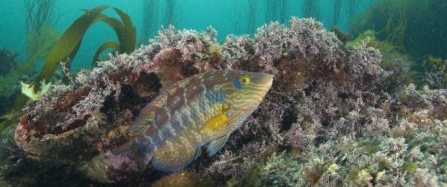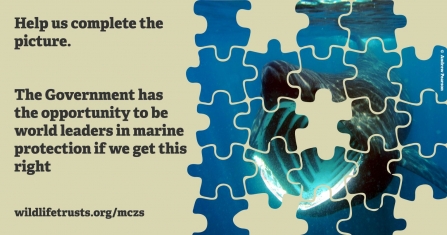
Photo by Paul Naylor

Photo by Paul Naylor
The report is published in advance of the government’s plans to announce a third and final phase of Marine Conservation Zones – the government plans to consult the public in 2017 and designate the chosen zones in 2018. The report will be presented to the environment minister, Therese Coffey.
The seven proposed protected areas off Cornwall include; Camel Estuary, Cape Bank, East of Jones Bank, North-East of Haig Fras, South-East Falmouth, South of the Isles of Scilly, South-East Falmouth.
Dr Nick Tregenza, Trustee for Cornwall Wildlife Trust explains,
“This is the much needed next step to complete an effective network of protected areas at sea. If the government lives up to its stated commitments such a network would put us at the forefront of worldwide marine conservation. Designating these additional 48 wild havens as Marine Conservation Zones will go some way to guaranteeing a future for the extraordinarily diverse natural landscapes that exist beneath the waves off our coast. MCZs can also play a valuable role for fisheries as nursery areas for both shellfish and finfish.”
Ruth Williams, Cornwall Wildlife Trusts’ Marine Conservation Manager, says,
“The government designated 50 zones in the first two phases, 13 of which were around the Cornish coast and offshore areas. Unfortunately, this does not provide us with the really comprehensive network needed to enable marine wildlife to thrive once more. We need sites in the best locations, covering all important habitats and species, and with the right degree of connectivity between areas. Cornwall Wildlife Trust hopes that the government will aim high and hit the 48 mark for this last phase for this crucially important piece of work.”

The 48 areas proposed in The Wildlife Trusts’ report would fill the gaps in the ‘blue belt’ around our coast. The seven sites around Cornwall vary from the rich reefs off Cape Bank which provide shelter for crawfish and other species, to the deep sea bed and subtidal sand in the South-West Deeps East site. This is a vital site for the network; lying 170km off Land’s End, the southern boundary aligns with the UK continental shelf limit. As well as protecting the rare deep sea bed habitats, designation would protect the Celtic Sea Relic Sandbanks, some of the deepest and largest shelf sand ridges. The site also overlaps a seasonal thermal front and is a nursery and spawning ground for a range of fish, and feeding ground for seabirds and cetaceans.
Ruth Williams concludes,
“We know that the public support an ecologically strong network of protected areas at sea and we want the government to be as ambitious as possible in order to restore decades of decline in the health of our seas and enable recovery in future.”